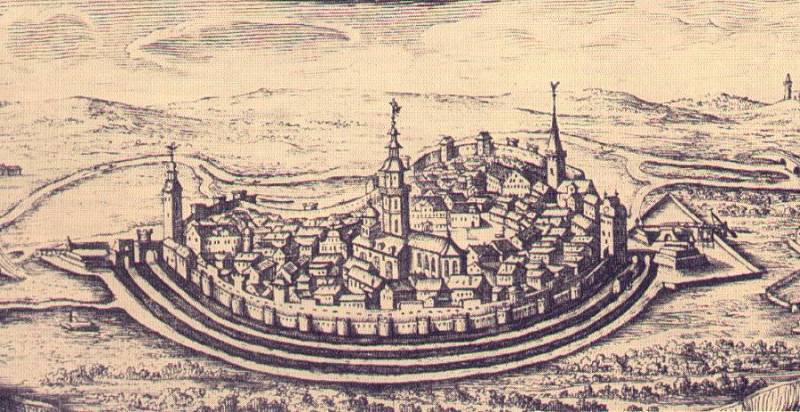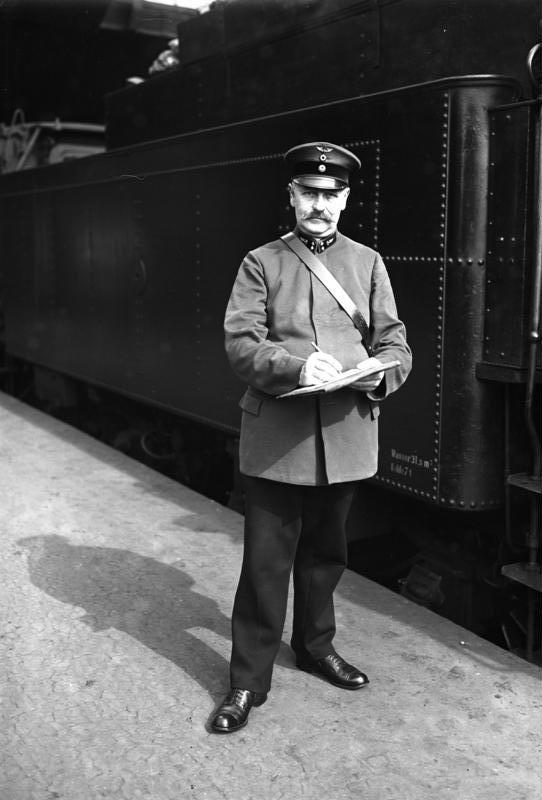|
DR Class 25.10
The steam locomotives of DR Class 25.10 were passenger train locomotives built for the Deutsche Reichsbahn (GDR), Deutsche Reichsbahn (DR) in East Germany after World War II. History The Class 25.10 was developed by the DR in 1954. It was built primarily with heavy passenger trains in mind, but was also intended to handle goods traffic. The first of the two trials locomotives to be manufactured was equipped with a mechanical stoker for lump coal. It was given the operating number 25 001. The second example had coal dust firing and was allocated number 25 1001. Only the coal dust fired vehicle was convincing enough, which resulted in the conversion of the first engine to coal dust firing as well in 1958 and its renumbering to 25 1002. The engines did not go into full production however, because the DR Class 23.10 had been designed and built. The makers were the Volkseigener Betrieb, VEB Orenstein & Koppel, Lokomotivbau "Karl Marx" in Potsdam-Babelsberg. The two engines were mainl ... [...More Info...] [...Related Items...] OR: [Wikipedia] [Google] [Baidu] |
Orenstein & Koppel
Orenstein & Koppel (normally abbreviated to "O&K") was a major Germany, German engineering company specialising in railway vehicles, escalators, and heavy equipment. It was founded on April 1, 1876 in Berlin by Benno Orenstein and Arthur Koppel. Originally a general engineering company, O&K soon started to specialise in the manufacture of railway vehicles. The company also manufactured heavy equipment and escalators. O&K pulled out of the railway business in 1981. Its escalator-manufacturing division was spun off to the company's majority shareholder at the time, Krupp, Friedrich Krupp AG Hoesch-Krupp, in 1996, leaving the company to focus primarily on construction machines. The construction-equipment business was sold to New Holland Construction, at the time part of the Fiat Group, in 1999. Founding and railway work The Orenstein & Koppel Company was a mechanical engineering, mechanical-engineering firm that first entered the railway-construction field, building locomotives a ... [...More Info...] [...Related Items...] OR: [Wikipedia] [Google] [Baidu] |
Meiningen
Meiningen () is a town in the southern part of the state of Thuringia, Germany. It is located in the region of Franconia and has a population of around 25,000 (2021)." target="_blank" class="mw-redirect" title="City of Meiningen, citizen service">City of Meiningen, citizen service Jahresrückblick 2021 (year review), PDF (4,4 MB). Meiningen is the capital and the largest town of the district. From 1680 to 1920, Meiningen was the capital of the Duchy (and briefly of the Free State) of . Meiningen is consider ... [...More Info...] [...Related Items...] OR: [Wikipedia] [Google] [Baidu] |
Standard Gauge Locomotives Of Germany
Standard may refer to: Symbols * Colours, standards and guidons, kinds of military signs * Standard (emblem), a type of a large symbol or emblem used for identification Norms, conventions or requirements * Standard (metrology), an object that bears a defined relationship to a unit of measure used for calibration of measuring devices * Standard (timber unit), an obsolete measure of timber used in trade * Breed standard (also called bench standard), in animal fancy and animal husbandry * BioCompute Standard, a standard for next generation sequencing * ''De facto'' standard, product or system with market dominance * Gold standard, a monetary system based on gold; also used metaphorically for the best of several options, against which the others are measured * Internet Standard, a specification ratified as an open standard by the Internet Engineering Task Force * Learning standards, standards applied to education content * Standard displacement, a naval term describing the weig ... [...More Info...] [...Related Items...] OR: [Wikipedia] [Google] [Baidu] |
Passenger Locomotives
A passenger (also abbreviated as pax) is a person who travels in a vehicle, but does not bear any responsibility for the tasks required for that vehicle to arrive at its destination or otherwise operate the vehicle, and is not a steward. The vehicles may be bicycles, buses, passenger trains, airliners, ships, ferryboats, and other methods of transportation. Crew members (if any), as well as the driver or pilot of the vehicle, are usually not considered to be passengers. For example, a flight attendant on an airline would not be considered a passenger while on duty and the same with those working in the kitchen or restaurant on board a ship as well as cleaning staff, but an employee riding in a company car being driven by another person would be considered a passenger, even if the car was being driven on company business. Railways In railway parlance, passenger, as well as being the end user of a service, is also a categorisation of the type of rolling stock used.S ... [...More Info...] [...Related Items...] OR: [Wikipedia] [Google] [Baidu] |
Railway Locomotives Introduced In 1954
Rail transport (also known as train transport) is a means of transport that transfers passengers and goods on wheeled vehicles running on rails, which are incorporated in tracks. In contrast to road transport, where the vehicles run on a prepared flat surface, rail vehicles (rolling stock) are directionally guided by the tracks on which they run. Tracks usually consist of steel rails, installed on sleepers (ties) set in ballast, on which the rolling stock, usually fitted with metal wheels, moves. Other variations are also possible, such as "slab track", in which the rails are fastened to a concrete foundation resting on a prepared subsurface. Rolling stock in a rail transport system generally encounters lower frictional resistance than rubber-tyred road vehicles, so passenger and freight cars (carriages and wagons) can be coupled into longer trains. The operation is carried out by a railway company, providing transport between train stations or freight customer faciliti ... [...More Info...] [...Related Items...] OR: [Wikipedia] [Google] [Baidu] |
Deutsche Reichsbahn (East Germany) Locomotives
The ''Deutsche Reichsbahn'', also known as the German National Railway, the German State Railway, German Reich Railway, and the German Imperial Railway, was the German national railway system created after the end of World War I from the regional railways of the individual states of the German Empire. The ''Deutsche Reichsbahn'' has been described as "the largest enterprise in the capitalist world in the years between 1920 and 1932"; nevertheless its importance "arises primarily from the fact that the Reichsbahn was at the center of events in a period of great turmoil in German history". Overview The company was founded on 1 April 1920 as the ("German Imperial Railways") when the Weimar Republic, which still used the nation-state term of the previous monarchy, (German Reich, hence the usage of the in the name of the railway; the monarchical term was ), took national control of the German railways, which had previously been run by the German states ('' Länderbahnen''). In 19 ... [...More Info...] [...Related Items...] OR: [Wikipedia] [Google] [Baidu] |
Steam Locomotives Of Germany
Steam is a substance containing water Water (chemical formula ) is an inorganic, transparent, tasteless, odorless, and nearly colorless chemical substance, which is the main constituent of Earth's hydrosphere and the fluids of all known living organisms (in which it acts as ... in the gas phase, and sometimes also an aerosol of liquid water droplets, or air. This may occur due to evaporation or due to boiling, where heat is applied until water reaches the enthalpy of vaporization. Steam that is saturated or superheated steam, superheated is invisible; however, "steam" often refers to wet steam, the visible mist or aerosol of water droplets formed as water vapor condensation, condenses. Water increases in volume by 1,700 times at standard temperature and pressure; this change in volume can be converted into work (physics), mechanical work by steam engines such as reciprocating engine, reciprocating piston type engines and steam turbines, which are a sub-group of steam ... [...More Info...] [...Related Items...] OR: [Wikipedia] [Google] [Baidu] |
Neubaulok
The German term ''Neubaulokomotive'' () specifically refers to those steam locomotives which were newly designed and built, either for the Deutsche Bundesbahn in West Germany or the Deutsche Reichsbahn in East Germany, after the Second World War. Concept The term ''Neubaulokomotive'' or ''Neubaulok'' was chosen to distinguish these locomotives from the standard steam locomotives built by the pre-war Deutsche Reichsbahn in Germany, the so-called ''Einheitsdampflokomotiven'' or ''Einheitsloks''. The main differences were the welded plate frames instead of bar frames and more powerful boilers with combustion chambers. The locomotives which were newly developed by the Bundesbahn stand out visually from their Reichsbahn and former state railway (''Länderbahnen'') counterparts, particularly because of their shiny, silver-coloured boiler rings. DB locomotives The DB ''Neubauloks'' were: * Class 10 * Class 23 * Class 65 * Class 66 * Class 82 DR locomotives The ''Neubauloks'' of the ... [...More Info...] [...Related Items...] OR: [Wikipedia] [Google] [Baidu] |
List Of East German Deutsche Reichsbahn Locomotives And Railbuses
This article contains a list of locomotives and railbuses of the Deutsche Reichsbahn (East Germany) (DR) according to the numbering system introduced by the DR on 1 July 1970. Following the October 1990 reunification of Germany, the DR's locomotives and railbuses were incorporated (and renumbered) on 1 January 1992 into the classification system of the West German ''Deutsche Bundesbahn'' (DB), originally issued on 1 January 1968, in preparation for the merger of the two German national railways that took place on 1 January 1994. This renumbering was also described as the 'locomotive classification of the Deutsche Bahn' as a number of changes and additions to the DB's 1968 system were needed. Classification before 1970: see also DRG classification system. Steam locomotives In the DR numbering plan the following additional practices were common: *xx.6xxx locomotives, that originated from former private railways. From 1970 the following sub-classes for all steam locomotives ... [...More Info...] [...Related Items...] OR: [Wikipedia] [Google] [Baidu] |
Tender (rail)
A tender or coal-car (US only) is a special rail vehicle hauled by a steam locomotive containing its fuel (wood, coal, oil or torrefied biomass) and water. Steam locomotives consume large quantities of water compared to the quantity of fuel, so their tenders are necessary to keep them running over long distances. A locomotive that pulls a tender is called a tender locomotive. Locomotives that do not have tenders and carry all their fuel and water on board the locomotive itself are called tank locomotives. A corridor tender is a locomotive tender with a passageway to one side, allowing crew changes on the fly. A brake tender is a tender that is heavy and used (primarily) to provide greater braking efficiency. General functions The largest steam locomotives are semi-permanently coupled by a drawbar to a tender that carries the water and fuel. The fuel source used depends on what is economically available locally. In the UK and parts of Europe, a plentiful supply of coal made ... [...More Info...] [...Related Items...] OR: [Wikipedia] [Google] [Baidu] |
Nordhausen Station
Nordhausen station is a railway junction in the north of the German state of Thuringia and the main station in the city of Nordhausen. It is located just south of the city centre in the valley of the Zorge. History The railway arrived in Nordhausen on 10 July 1866 with the opening of the line to Halle, which was extended on 9 July 1867 to the west to Eichenberg. In 1869 lines to Northeim and to Erfurt were added. In 1897, the narrow gauge Harz Railway was opened to Wernigerode Wernigerode () is a town in the district of Harz, Saxony-Anhalt, Germany. Until 2007, it was the capital of the district of Wernigerode. Its population was 35,041 in 2012. Wernigerode is located southwest of Halberstadt, and is picturesquely s ..., starting at the Nordhausen Nord station on the north side of the station. In the station forecourt there is a stop on the Nordhausen tramway that connects the station with most districts of the town. In 1994 the station was electrified. The station i ... [...More Info...] [...Related Items...] OR: [Wikipedia] [Google] [Baidu] |



